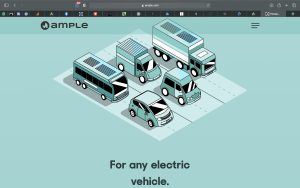The new USPS NGDV will ship as an ICE, but will become an electric vehicle when the time is right.
Jay Ramey, writing for Autoweek, reports the US Postal Service has greenlighted a new postal vehicle to replace the current fleet of boxy Grumman LLV postal vans. The distictly odd-looking vehicles will be supplied by defense contractor Oshkosh Defense.
Here is the thought-provoking element. The initial run of the Oshkosh-built vans will utilize a conventional gasoline engine. As the electrical infrastructure matures, the new vehicles will dump the ICE for an electric motor and battery pack.
Is the USPS NGDV an EV or an ICE?
EV conversions are becoming commonplace. But this is different. The Next Generation Delivery Vehicles (NGDV) will be designed to ship with a temporary ICE powerplant. When the postal service deems the time is right, the gas engine and accessories will be yanked and replaced by an electrical drive train.
This has many advantages. EV conversions always entail some compromises, mostly concerning the location of batteries and other electrical components. Since the NGDV will be designed from the ground up as an eventual EV, most of those compromises can be bypassed.
The plan also allows the postal service to start replacing the old Grumman vans without waiting for the EV charging base to fully mature.
When will the NGDV become an EV?
According to Autoweek, the Postal Service doesn’t feel there will be sufficient charging capacity by 2023, when the first NGDVs are scheduled to go into service. The initial ICE arrangement will allow the NGDV to take to the road by that time. When the USPS has had a chance to build an adequate network of charging stations, they will convert the vans to electric power.
The PS intends to roll out charging points at different locations over time. It seems likely the service will operate ICE and EV versions of the NGDVs side by side.
Of course, this only makes sense if the cost of replacing the ICE can be recouped once the new drivetrain is installed. Considering the NGDV is designed from the ground up to be an EV, it should be possible to recover the investment in short order.
The ground-up philosophy resolves the dilemma that plagues many ICE to EV conversions: where do you find room for the batteries? As the chassis is already laid out to accommodate a battery pack, the conversion should be simple and straightforward.
The Autoweek report doesn’t mention whether Oshkosh Defence will build their own gasoline engines or source the powerplants elsewhere. If they incorporate an engine from an existing automaker, there would be a market for the used ICEs beyond the USPS. This could help to offset the conversion expense.
Considering the thousands of vehicles employed by the USPS, failure of the NGDV is not an option. The current Grumman vans require replacement. The contract has been awarded to Oshkosh, so they have to deliver.
The initial comments are mostly negative
The Autoweek website still allows comments, and the bulk of these seem highly negative. Many of these ridicule the look of the new van, particularly the immense front windshield. This can be chalked up to people being put off by unfamiliar styling. More disturbing is the criticism of Electric Vehicles in so many of the comments.
There seems to be a nearly uniform objection to the postal van’s electrification. The discussion ranges from an objection to the USPS “wasting” money on new vehicles (ignoring the fact that the current fleet is fast reaching obsolescence) to the often-heard objections to EVs in general. (Lack of range, unproven technology, etc.)
The negative tone of the majority of comments indicates a general loathing of EVs, at least by the readers of the site. There is a strong implication that the NGDV, particularly the electrified version, is another instance of wasteful government spending.
USPS will spend zero tax dollars on the NGDV
This ignores the fact the USPS is no longer funded by the government. According to the USPS website, “Zero tax dollars (are) used. The Postal Service receives NO tax dollars for operating expenses and relies on the sale of postage, products and services to fund its operations.”
The Postal Service is a functioning business, not a government charity. I trust they ran the numbers and determined that the NGDV will be cost-effective over the ten-year length of the Oshkosh contract. I intend to follow up on this story as it develops.
The nay-sayers may need to get used to the peculiar styling of the NGDV. My guess is we will be seeing a lot of them during the next decade.
You can see photos of the NGDV and read Ramey’s Autoweek article here.


Be First to Comment